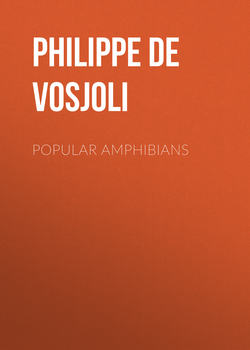Читать книгу Popular Amphibians - Philippe De Vosjoli - Страница 7
На сайте Литреса книга снята с продажи.
ОглавлениеCHAPTER 2
QUARANTINE AND ACCLIMATION
Regrettably, most species covered in this book are collected from the wild, transported, held in overcrowded conditions, and starved for varying periods of time before landing in the local pet store. These conditions make it highly probable that the animals you buy will be thin, stressed, and hosts to parasites or bacterial and viral pathogens.
Although your new frog or newt might appear healthy, it might be in a disease-incubation stage, soon to be overcome by pathogens. Indeed, newly imported amphibians often initially seem in good health only to have a sudden crash or decline within the first week or two after purchase (see “Crash Syndrome” in Diseases and Disorders).
Because of the risk of spreading disease, experienced keepers always quarantine new animals (keeping them separate until they have proven healthy) before introducing them into a setup with established animals. Many established animals have been wiped out because of the introduction of new animals without quarantine. However, if the animals you purchase come from the same tank and are the only ones you plan to keep, quarantine is not necessary.
During quarantine, which should be a minimum of thirty days, monitor the health of your animals. Keep track of their attitude, alertness, and feeding activity, the condition of their feces, their ability to gain and maintain weight, and their behavior. Inactivity, hyperactivity, spastic behaviors, failure to feed, watery feces, weight loss, discolored skin patches, and cloudy eyes are all signs of possible disease.
Most of the amphibians covered in this book can be quarantined in 10-gallon tanks with screen tops. In general, aquatic species fare well in bare tanks with a sponge filter, a few potted aquatic plants, and an underwater shelter. For semiaquatic species, such as newts or floating frogs, use partially filled tanks with islands made of inverted flower pots with a piece of cork and strands of elodea (Egeria densa) as temporary housing. Keep land dwellers such as tiger salamanders on moistened green moss and provide them with a shelter and a shallow water container. Read the chapter about housing for further details.
In this quarantine setup for most newts, a Foam Home polyurethane foam background provides surface areas and hollows that make the newts feel more secure. A section of cork was wedged between the foam and front glass to allow access to land.
Inexpensive utility sinks are invaluable for quarantining groups of newts or frogs. A screen cover is required for frogs and recommended with newts and salamanders to prevent escape.
A quarantine setup for semiaquatic frogs should have a low level of water, and cork bark or foam platforms. Place white paper under the tank to monitor the state of the feces. If a large foam platform and cork bark shelters are used, this system will also work well for various salamanders. Make sure you have a secure lid.
The substrate of this simple setup for quarantine of terrestrial and semiaquatic salamanders is a gravel bed covered with moist green moss. Cork bark shelters are placed on the moss and a shallow and easily accessible water container is sunk into the gravel. This kind of setup can also be used with semiterrestrial and terrestrial frogs, such as leopard frogs, rice paddy frogs, and even fire-bellied toads. The moss must be kept moist.
Non-release Practices
Never release unwanted or sick animals into the wild. It is illegal. Moreover, most released amphibians do not survive. In addition, there is a chance that you could threaten native wildlife by exposing them to foreign pathogens. Unwanted pets should always be sold or given to pet businesses, other hobbyists, or animal shelters—never released. Unwanted sick amphibians are best euthanized.
